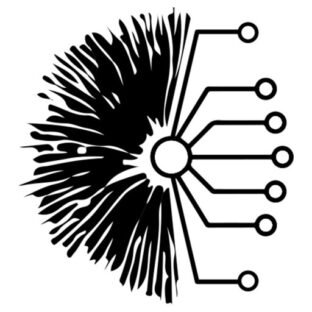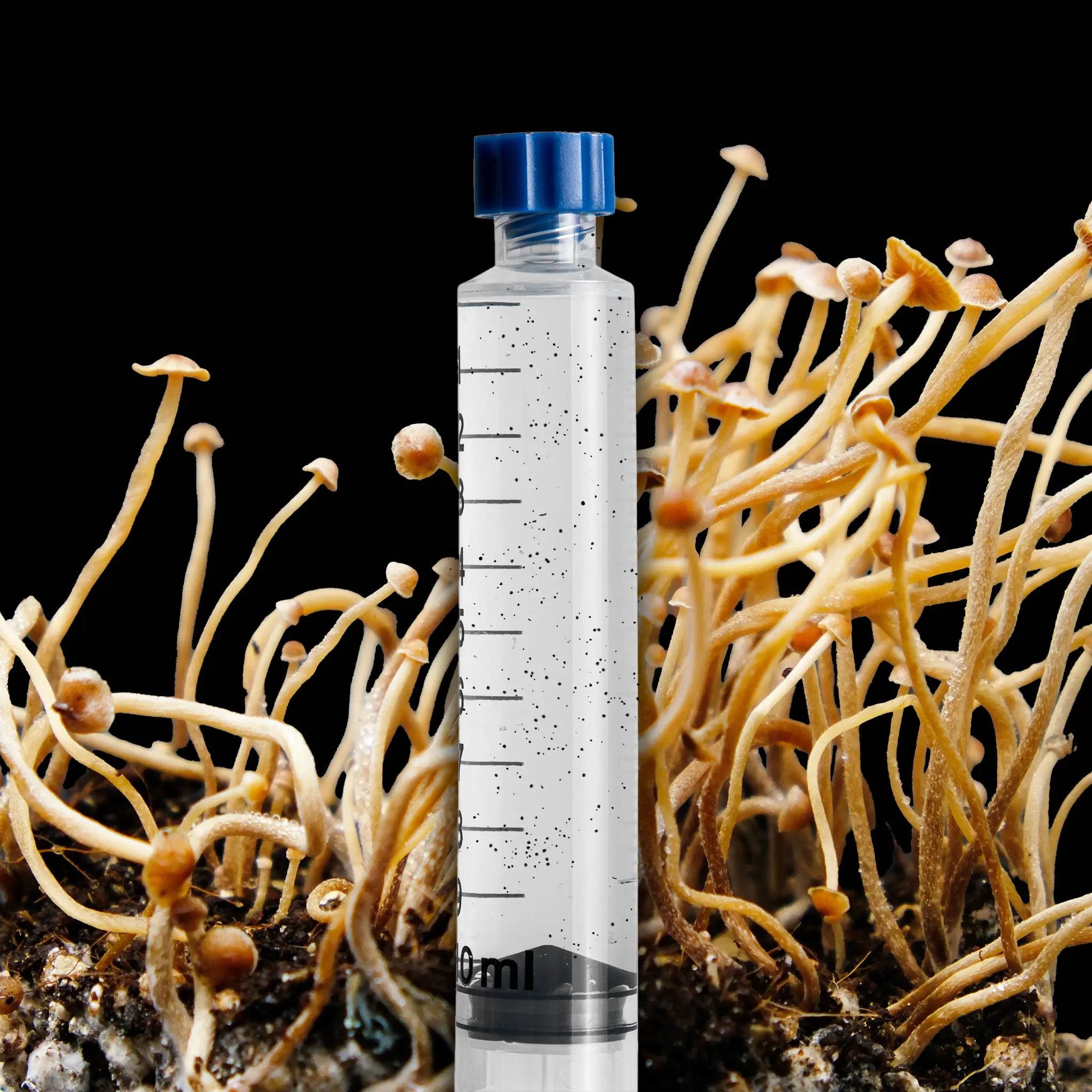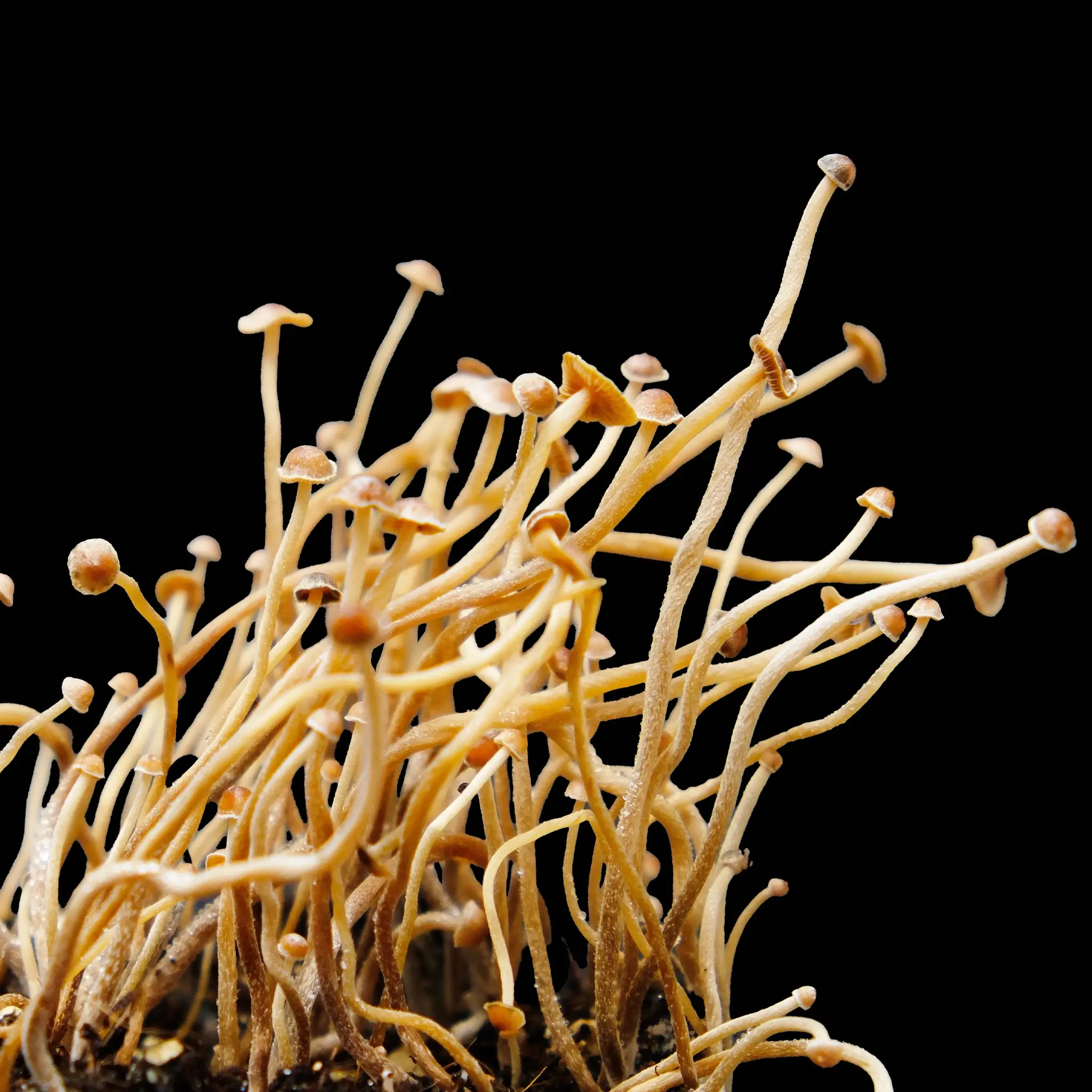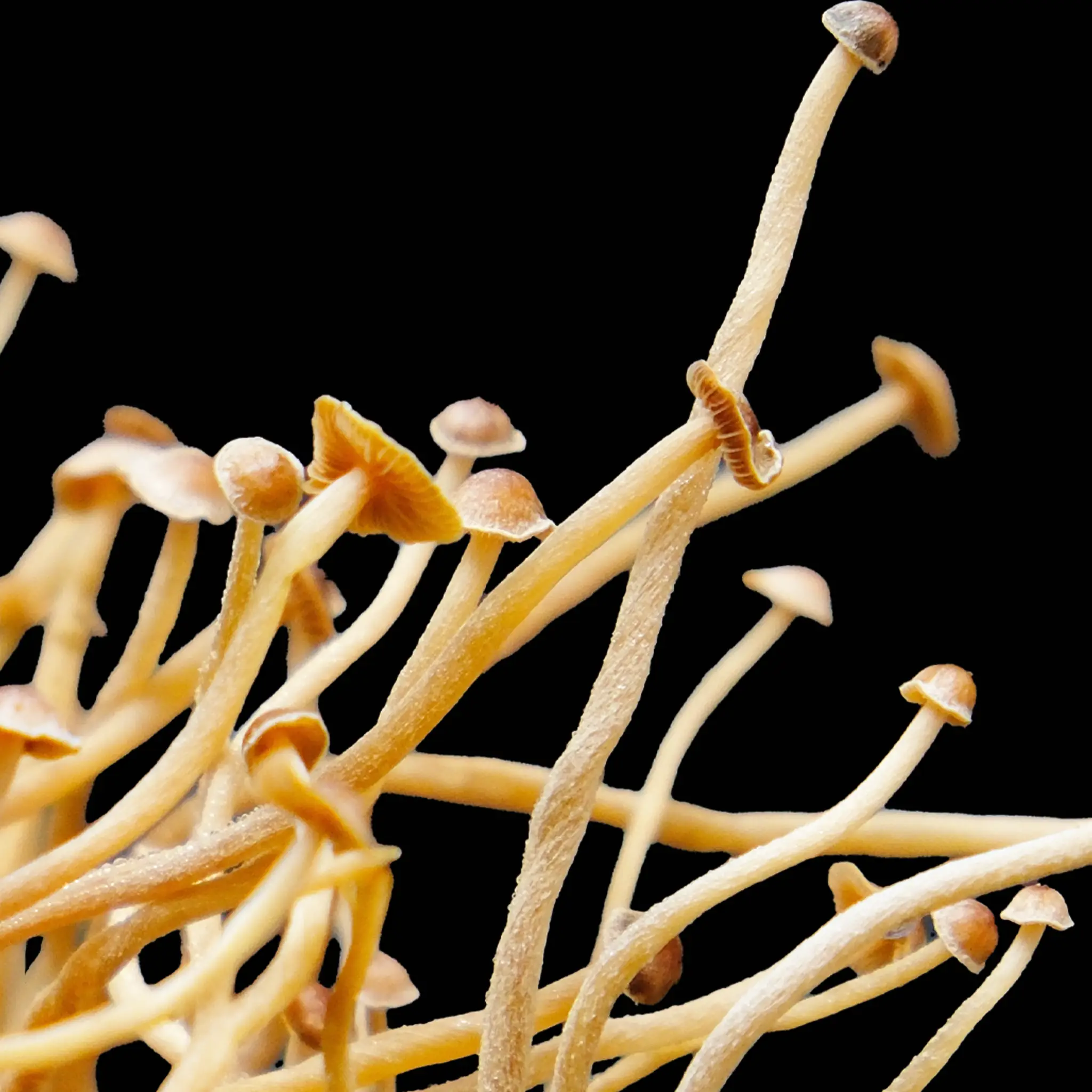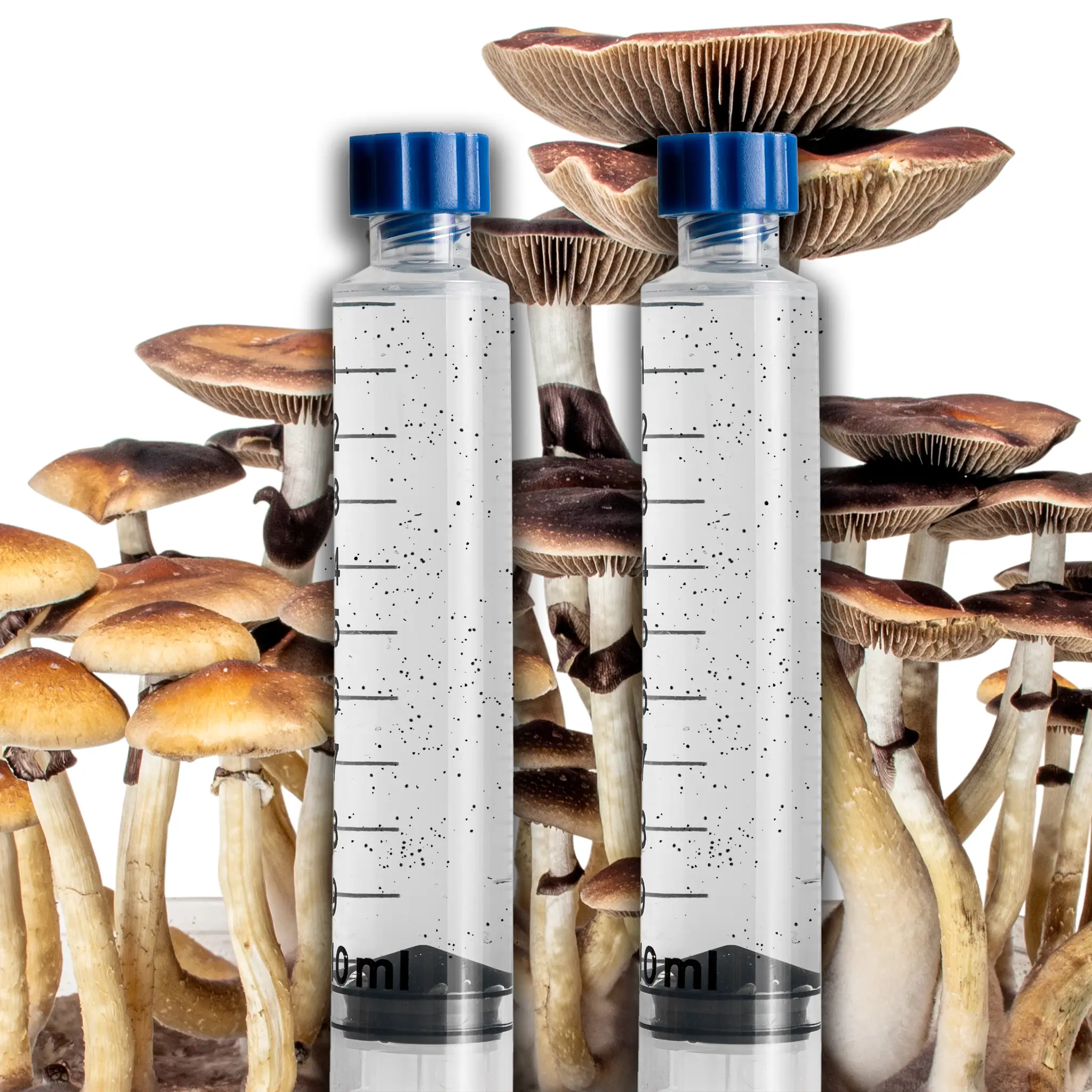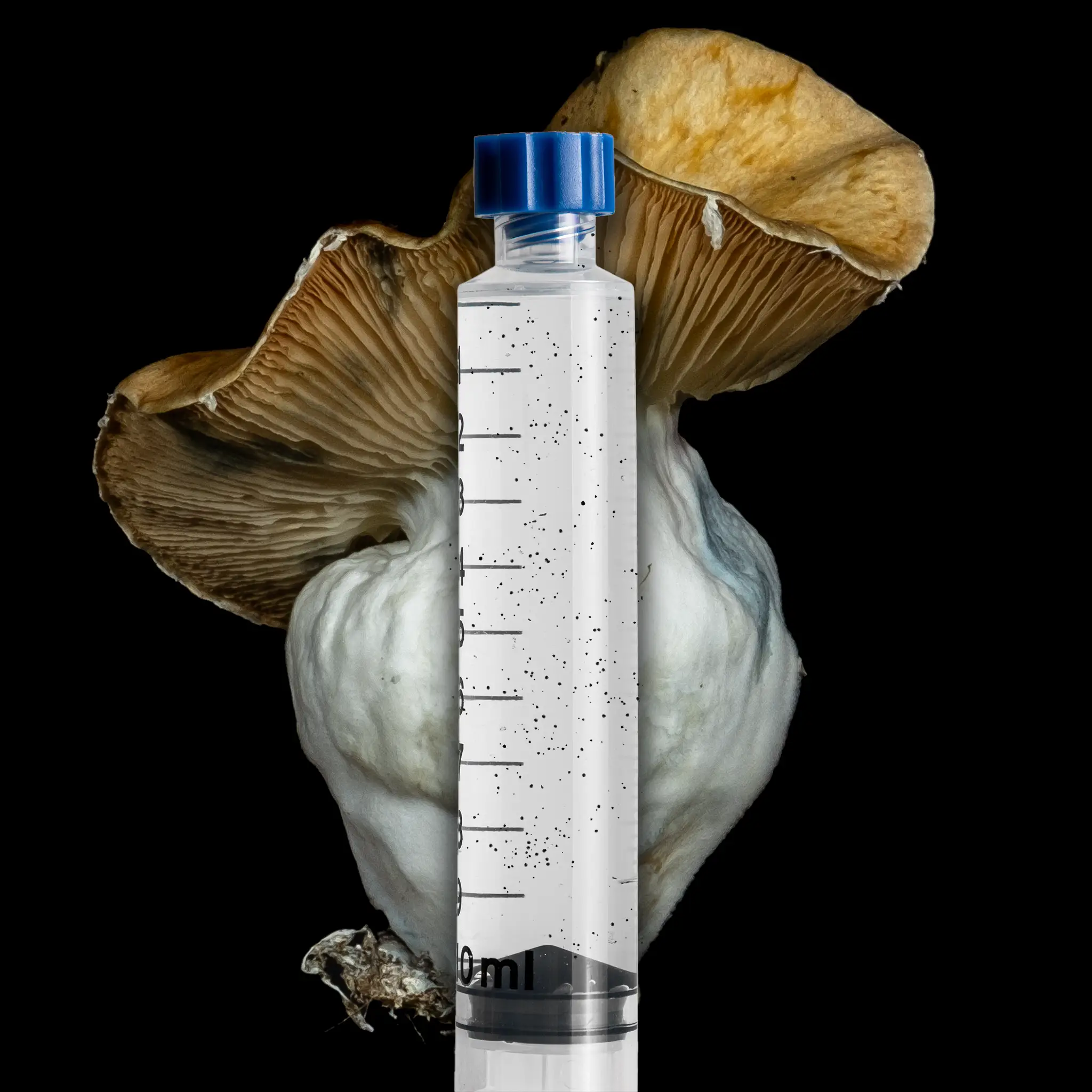Description
Tampanensis ATL7 Mushroom Spores
The Tampanensis ATL7 Mushroom, often referred to as the “Philosopher’s Stone,” is a unique psilocybin strain famed for producing sclerotia—dense underground structures known for their potent psychedelic properties. This strain is a Psilocybe tampanensis variant, celebrated for both its ability to form sclerotia and its powerful above-ground fruiting bodies. With its rich history, unusual biology, and powerful effects, the Tampanensis ATL7 Mushroom is a favorite among mycologists and psychonauts.
Discovery and Naming
Historical Background
The Psilocybe tampanensis mushroom was first discovered in 1977 by renowned mycologist Steven Pollock in a grassy area near Tampa, Florida. What makes this discovery particularly remarkable is that it was the only specimen of Psilocybe tampanensis found in the wild at that time. Despite multiple efforts to locate more samples in the region, this lone specimen became the foundation for years of study and cultivation.
The ATL7 variant of Psilocybe tampanensis, specifically, was isolated in the early 2000s from a specimen found near Atlanta, Georgia. It was distinguished for its consistent production of sclerotia and its slightly different growth characteristics compared to other tampanensis variants. This strain, known as ATL7, was selectively bred to enhance both its sclerotia production and its fruiting body development, making it a versatile strain for both researchers and cultivators.
Fun Origins
The story of the Tampanensis ATL7 mushroom reads like a mycological treasure hunt. After the initial discovery in Florida, the strain was thought to be incredibly rare, with no other specimens found in the wild for decades. It wasn’t until the ATL7 variant emerged from research efforts that this strain gained broader popularity.
One fun fact about this strain is its nickname, “Philosopher’s Stone,” which refers to the sclerotia it produces—compact masses of hardened mycelium that are packed with psilocybin. These underground formations allow the fungus to survive adverse conditions and make it a prized strain for microdosing and long-term storage. The discovery of ATL7 has helped to solidify Psilocybe tampanensis as one of the most unique species in the psilocybin mushroom world.
Naming
The strain name “Tampanensis” derives from its original discovery location near Tampa, Florida, while the “ATL7” designation refers to its isolation near Atlanta, Georgia. The ATL7 variant is now known for its reliability in producing both potent sclerotia and strong fruiting bodies. The name has become synonymous with high-quality sclerotia production and is revered for its consistency and unique psychoactive effects.
Genetic Lineage
Sclerotia-Producing Psilocybe tampanensis
The Tampanensis ATL7 Mushroom belongs to the Psilocybe tampanensis species, a sclerotia-producing species of psilocybin mushrooms. Unlike many other Psilocybe cubensis strains, which are known for their large, above-ground fruiting bodies, Psilocybe tampanensis is prized for its ability to produce sclerotia underground. These dense, truffle-like formations are packed with psilocybin, offering a different consumption experience compared to typical mushrooms.
Focus on Sclerotia Production
The ATL7 variant of Psilocybe tampanensis has been bred for its superior sclerotia production, making it an ideal choice for those looking to grow mushrooms for microdosing or long-term storage. In addition to its sclerotia, ATL7 also produces fruiting bodies that, while smaller than typical Psilocybe cubensis, are highly potent and visually distinct. The strain’s genetics have been stabilized to ensure consistent results, whether producing sclerotia or mushrooms.
Mycology
Cultivator Contributions
The cultivation of the Tampanensis ATL7 Mushroom is largely thanks to the dedicated efforts of researchers and amateur mycologists who recognized the potential of the sclerotia-producing strain. By selectively breeding for traits like sclerotia formation, potency, and resilience, cultivators have ensured that the ATL7 variant is one of the most reliable strains available for both research and personal use.
The strain’s unique combination of sclerotia and fruiting bodies has made it a favorite among those looking for versatile cultivation options. Whether for microdosing, research, or full-fledged psychedelic journeys, ATL7 offers something for everyone.
Research Potential
The Tampanensis ATL7 Mushroom offers significant research potential due to its ability to produce both sclerotia and fruiting bodies. The strain provides an excellent opportunity for studying fungal resilience, as the sclerotia allow the mushroom to survive in adverse environmental conditions. Additionally, researchers continue to explore the genetic factors that contribute to its unique growth patterns and potent effects, making it a prime candidate for future studies in both cultivation techniques and psilocybin therapy.
Physical Traits
Cap
The cap of the Tampanensis ATL7 Mushroom is smaller than many other psilocybin mushrooms but still displays distinctive features that set it apart. The caps are generally small to medium in size, with a conical shape that flattens slightly as the mushroom matures. The color of the cap ranges from light tan to a deeper caramel-brown, often with a smooth and glossy surface.
One unique feature of the ATL7 cap is its thick, almost rubbery texture, which contrasts with the more fragile caps of other strains. This thick cap is well-suited for the tough environmental conditions in which the strain can thrive, and it often exhibits slight bluish bruising, a sign of its psilocybin content.
Stem
The stems of the ATL7 mushrooms are thin and somewhat fragile, especially when compared to the thicker stems of strains like Psilocybe cubensis. However, they retain the characteristic blue bruising that indicates high psilocybin levels. The stems are generally cream-colored with slight yellowing near the base and often hollow in the center, giving them a delicate appearance.
Gills
The gills of the Tampanensis ATL7 Mushroom are closely spaced and start out as a pale cream color, gradually darkening to a rich purple-brown as the spores mature. The gills are relatively dense, contributing to the mushroom’s small but potent structure. The contrast between the lighter cap and the darker gills adds to the mushroom’s visual appeal, making it a standout strain for those interested in both aesthetics and effects.
Tampanensis ATL7 Mushroom Potency
The Tampanensis ATL7 Mushroom is known for its high potency, particularly in its sclerotia, which are often considered one of the most powerful forms of psilocybin available. The sclerotia offer a deeply introspective and cerebral experience, often described as mentally expansive and emotionally grounding. Users report a strong sense of euphoria, spiritual clarity, and vivid visual effects, making it a popular choice for both microdosing and full psychedelic trips.
The above-ground fruiting bodies, while smaller in size, also deliver a strong and immersive psychedelic experience, with similar effects to the sclerotia. The combination of sclerotia and mushrooms provides a versatile range of experiences depending on dosage and preparation.
Growth Rate
Tampanensis ATL7 Mushrooms are known for their slow but steady growth rate, particularly when it comes to sclerotia formation. While the mushrooms themselves may take some time to develop, the sclerotia can take several months to fully form. However, the wait is well worth it, as the sclerotia provide a concentrated and long-lasting source of psilocybin.
Cultivation Requirements
- Substrate: Tampanensis ATL7 performs well on nutrient-rich substrates like brown rice flour and rye grain. It is essential to provide the right nutrients to encourage sclerotia formation and mushroom fruiting.
- Temperature: The ideal temperature for cultivation ranges from 70-75°F (21-24°C). Consistent temperatures are necessary to encourage both sclerotia and mushroom development.
- Humidity: High humidity levels of around 85-90% are crucial during the fruiting phase to support the growth of mushrooms.
- Light: Indirect light is sufficient for the ATL7 strain, but maintaining a consistent light cycle helps stimulate both sclerotia and mushroom formation.
Tampanensis ATL7 Mushroom Yield
The Tampanensis ATL7 Mushroom produces moderate to high yields, particularly in its sclerotia. While the fruiting bodies are relatively small, the sclerotia offer a substantial and long-lasting yield that makes this strain a favorite for those interested in maximizing their cultivation efforts. The combination of sclerotia and fruiting bodies ensures that ATL7 provides multiple avenues for harvesting and consumption.

In Stock
